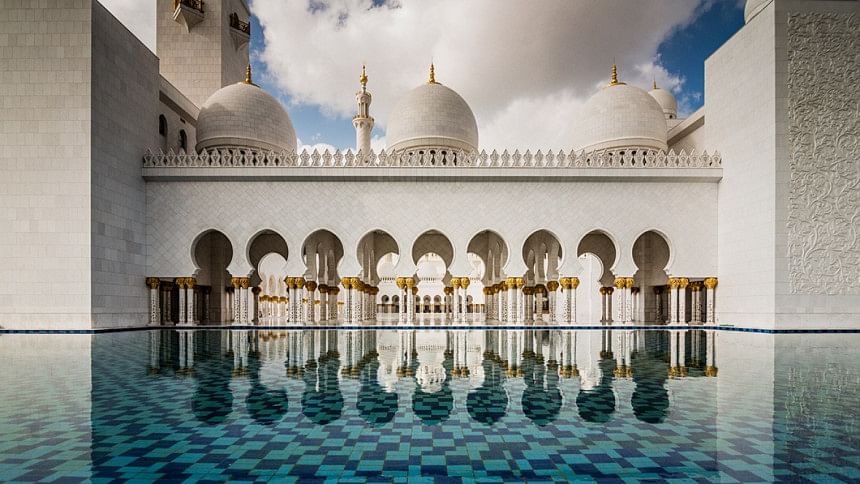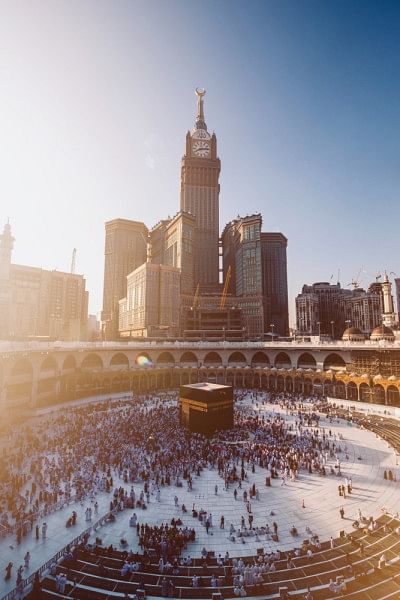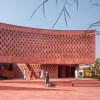6 most beautiful mosques in the world

Mosques have been used as places of worship for Muslims all over the world for over a millennium. The beauty and rich history, architecture and cultures of these sacred sites continue to inspire visitors to this day. Sacred sites, regardless of creed or denomination, provide religious insights as well as a greater grasp of history. Mosques, like many other religious monuments around the world, frequently serve as symbols of a city's cultural identity and geography.
We have compiled a list of the 6 most breath-taking mosques from around the world that will steal your breath away.

The Al-Haram Mosque in Makkah, Saudi Arabia
The largest mosque in the world, the Al-Haram Mosque, housing the holy Kaaba and the sacred black stone, covers an area of 400,800 square metres and is not only the largest Islamic architecture but also one of the most magnificent mosques in the world. It is one of the most important places of worship in the world, with millions of pilgrims visiting each year for Hajj and Umrah rites. Since its construction, Al-Haram, has grown to accommodate an increasing number of pilgrims. With a total capacity of 4 million worshippers, it is the world's largest mosque.

The Great Mosque of Djenné in Djenne, Mali
The Great Mosque of Djenné in Mali is recognised as one of the finest examples of Sudano-Sahelian architecture. The original construction, made of mud and adobe plaster, dates back to the 13th century, however, the mosque was rebuilt in 1907. The ostrich eggs positioned at the very top of the pillars are one of the Great Mosque's most distinguishing features; they are a sign of fertility and purity in the Malian region.

Crystal Mosque in Kuala Terengganu, Malaysia
Unlike most traditional mosques across the world, Malaysia's Crystal Mosque has a more modern and sleek appearance because of its all-steel and glass structure. When the prayer halls and conference rooms are illuminated from within, the mosque's glass domes appear to be composed of pure gold. The Crystal Mosque's architecture and design incorporate a few Chinese-inspired elements.

Sultan Ahmed Mosque in Istanbul, Turkey
Sultan Ahmed Mosque, often known as the Blue Mosque because of the Blue Iznik tiles that cover its interiors, is a breath-taking sight. The mosque comes from the 17th century when it was built during the reign of Ahmed I. This construction is thought to be the last big mosque of the classical era, with six high-rising minarets and five main domes.

Great Mosque of Xi'an in Xi'an, China
The Great Mosque of Xi'an, a combination of traditional Chinese design and Islamic practicality, comprises more than 20 buildings across five courtyards, making it China's largest mosque. Many of the architectural aspects of the sacred site pay homage to Persian heritage while remaining true to the style of infrastructure during the Ming and Qing dynasties. For example, the "Examining the Heart Tower" pagoda in the third courtyard serves as the mosque's minaret.

Islamic Centre Mosque in Rijeka, Croatia
This mosque is a stunning blend of contemporary and traditional Islamic art. The mosque features a distinctively designed dome, shaped in five independent segments that optically make a single thing, with curved geometric shapes and patterns. Duan Damonja, a well-known Croatian sculptor, designed the Islamic Centre Mosque. The mosque, which is now a major tourist destination, was built in response to the Islamic population in Rijeka's long-held desire for a dedicated location for prayer.

 For all latest news, follow The Daily Star's Google News channel.
For all latest news, follow The Daily Star's Google News channel. 








Comments